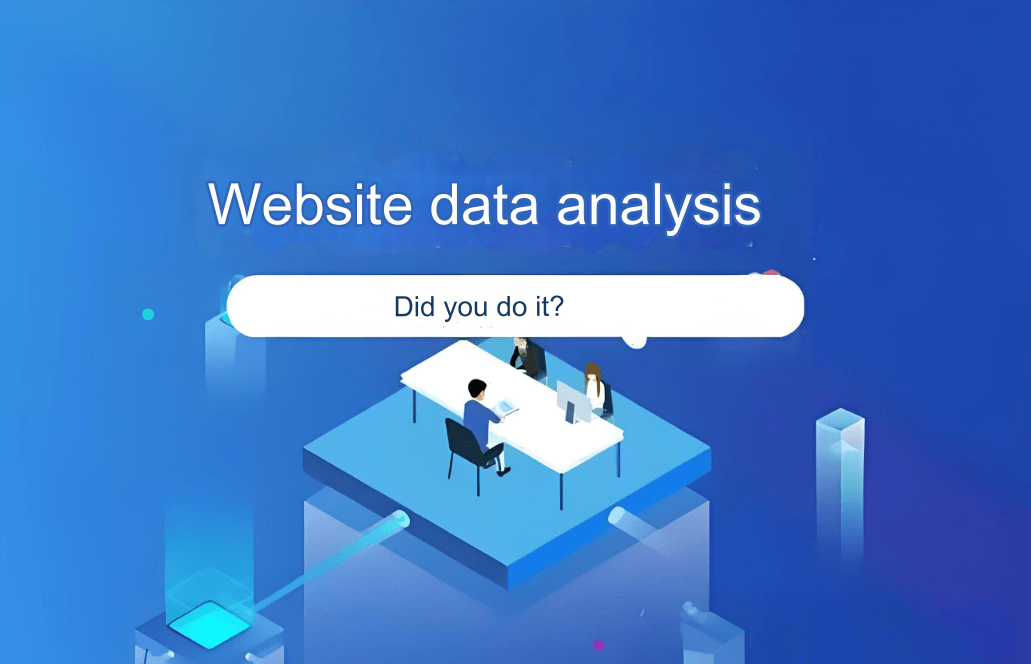Website data analysis is crucial for understanding site performance, optimizing content, and enhancing user experience. By effectively leveraging web statistics, site operators can promptly identify and rectify issues while tailoring optimizations to user needs.
Currently, there are numerous excellent website analytics tools available, each with its unique features and focus areas. Among them, the following five tools are particularly well-known and popular, making them worth exploring for website managers and marketers. These tools provide comprehensive data support, including traffic analysis, channel insights, and user behavior metrics, helping websites continuously improve operational efficiency and competitiveness.
Google Analytics
What is Google Analytics?
Website: Google Analytics
Google Analytics is a free web analytics service provided by Google, used to track and report website traffic, and is the most widely used web analytics service on the Internet. Commonly referred to as GA, it is an essential tool for independent online sellers. GA collects data on various e-commerce pathways that influence online stores, analyzing consumer behavior trends and changes to drive data-driven decision-making and improve online sales performance.
Key Features of Google Analytics:
Data-driven product development: Quickly adapt to consumer demands for effective product iterations.
Inventory management: Enhance inventory turnover and predict restocking needs.
Collaborative marketing: Leverage existing customers to increase sales with related products.
User behavior data collection: Understand consumer needs, expectations, and pain points.
Personalized shopping experiences: Tailor product recommendations to individual consumer preferences.
Engaging user experiences: Focus on user experience beyond price and quality.
Product mix optimization: Analyze best-selling and underperforming products to enhance offerings.
Maximize ad spend ROI: Analyze channel performance to improve marketing ROI.
Customer-centric approach: Use analytics to understand customers and enhance product and shopping experiences.
Adobe Analytics
What is Adobe Analytics?
Website: Adobe Analytics
Adobe Analytics is a web analytics solution that enables businesses to measure, analyze, and optimize their digital marketing efforts. This cloud-based platform provides real-time insights into website and mobile app performance, customer behavior, and marketing effectiveness.
Key Features of Adobe Analytics:
Real-time data: Insights into customer behavior for quick responses to market trends.
Segmentation: Target specific customer groups with personalized marketing based on demographics and behavior.
Data visualization: Tools to interpret complex datasets and identify trends easily.
Advanced analytics: Features like predictive analysis and AI-driven insights to discover hidden patterns in customer behavior.
Attribution modeling: Understand the impact of marketing efforts across channels to optimize spending and improve ROI.
Reporting options: A variety of reporting features for collaboration on data-driven decision-making.
Clicky
What is Clicky?
Website: Clicky
Clicky primarily serves small websites and blogs, offering easy-to-use features like real-time visitor tracking and in-depth content analysis.
Key Features of Clicky:
Plugins and apps: Integration with various platforms using site-specific IDs and keys.
API access: Retrieve desired statistics through Clicky’s external service API.
Detailed visitor stats: Individual page tracking with flow analysis for inbound links.
Customizable dashboard: Display frequently used metrics visually on the dashboard.
Flexible data cycles: Compare data over different time periods.
Visitor environment stats: Comprehensive analysis of operating systems and browser versions.
Matomo
What is Matomo?
Website: Matomo
Matomo is a leading open-source analytics tool, historically known as Piwik, offering powerful features for free.
Key Features of Matomo:
Real-time traffic monitoring: Visualize key metrics like visitor numbers and bounce rates.
User behavior analysis: Understand geographic location, device usage, and browsing paths.
Funnel analysis and conversion tracking: Set conversion goals and track user behavior along critical paths.
Advertising and marketing evaluation: Comprehensive analysis of ad performance and marketing campaigns.
StatCounter
What is StatCounter?
Website: StatCounter
StatCounter is a US-based website traffic monitoring service providing various statistical reports and website traffic data.
Key Features of StatCounter:
Real-time website statistics: Monitor visitor numbers, page views, and bounce rates with intuitive reporting.
Multidimensional data analysis: Understand visitor demographics and behavior comprehensively.
E-commerce data tracking: Analyze orders, revenue, and shopping cart data for optimization.
Custom reports and data export: Flexible reporting features and data export to Excel for further analysis.
Conclusion
As the internet continues to evolve, website data analysis has become an integral part of site management. By utilizing professional analytics tools, website managers and marketers can gain a comprehensive understanding of site operations, optimize content, and enhance user experiences effectively.







